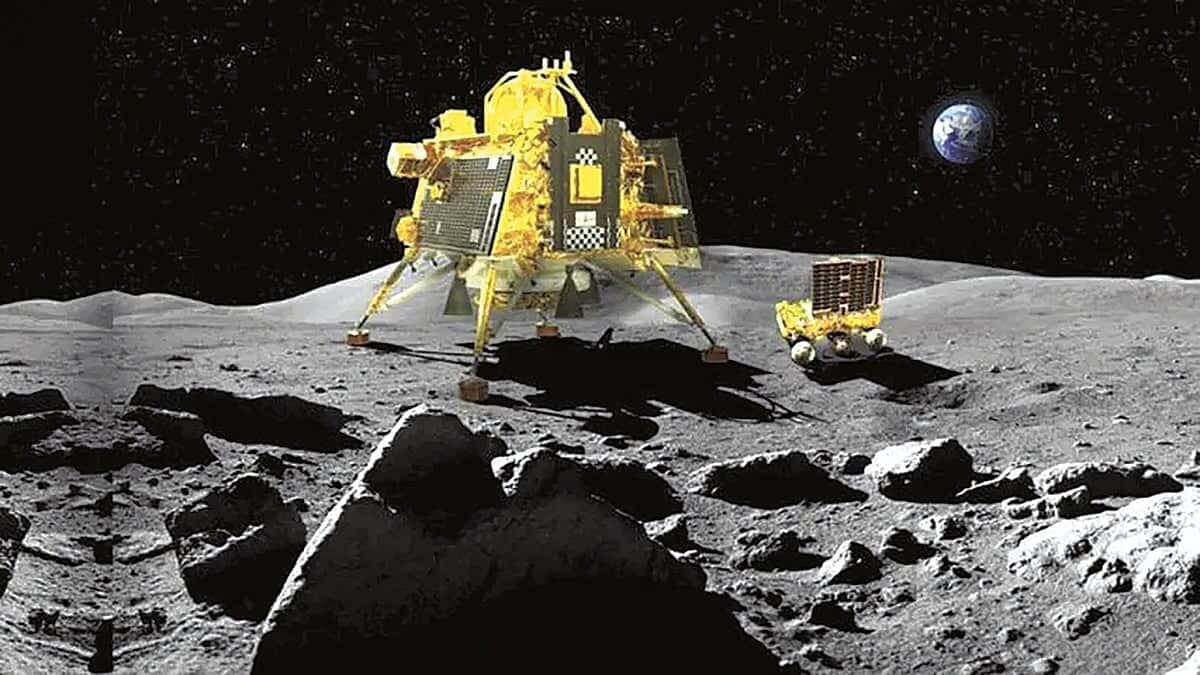
Chandrayaan-3's landing site on Moon is 3.7B years old
What's the story
Thanks to its Chandrayaan-3 mission, the Indian Space Research Organisation (ISRO) has unearthed a major secret of the Moon.
The landing site of the mission, dubbed Shiv Shakti point, is believed to be around 3.7 billion years old.
This timeline coincides with the rise of primitive life on Earth, giving us a rare glimpse into our planet's past.
Lunar exploration
ISRO team uncovers lunar landscape's ancient history
A team from ISRO's Physical Research Laboratory (PRL) in Ahmedabad, has been studying the terrain around the landing site.
Using advanced imaging tools, they studied craters and rock formations to understand the geological history of the region.
The team found three different terrains - rugged, smooth plains, and low-relief areas - with the landing site being located within the low-relief plains.
Crater analysis
Impact craters and lunar evolution
The Shiv Shakti point is surrounded by massive craters like Boguslawsky, Manzinus, and Schomberger.
These ancient craters are thought to have ejected debris that formed the surrounding area.
A fresh crater was found about 14km south of the site, that was filled with many large rock fragments.
Some of these rocks were over 17 meters long, offering valuable insights into the Moon's history and its dynamic surface.
Lunar landscape
Geological map reveals debris and boulder distribution
The geological map of the landing site reveals that debris from the Schomberger crater blankets the area. The landscape is littered with boulders, some larger than five meters.
"Most of them originate from a fresh, 540-meter crater located 14km south of the landing site," the report said.
Smaller rock fragments were located on the west side, possibly originating "from a nearby 10-meter-wide crater."
Upcoming ventures
Chandrayaan-3's historic landing and future missions
Chandrayaan-3 made history on August 23, 2023, by successfully landing on the Moon's south polar region.
With this, India became the fourth nation to achieve a soft landing on the Moon's surface and the first to land near the lunar south pole.
Next up, ISRO is gearing up for Chandrayaan-4 mission, scheduled for launch in 2027. It will collect samples from the Moon's surface and return them to Earth for scientific analysis.